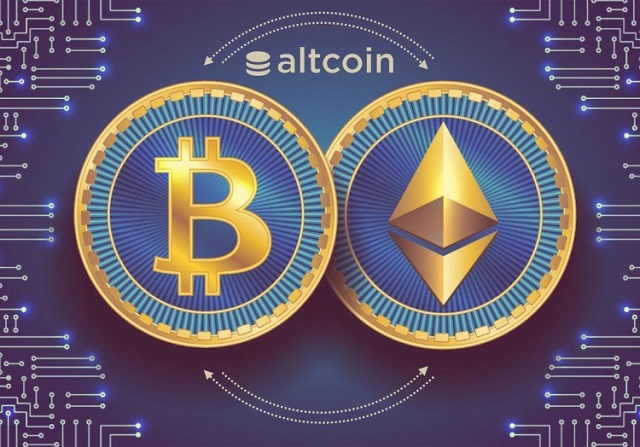Apart from Bitcoin, there are many other cryptocurrencies. They are usually referred to as altcoins (abbreviation of ‘alternative coin’). This generalising name was given because most altcoins were created in attempts to change or improve Bitcoin. Altcoins appeared when the creators of Bitcoin uploaded the open code and allowed other enthusiasts to create their own cryptocurrency on its basis. Sometimes, when creating an alternative based on Bitcoin, its source code is innovated or developed from scratch.
Table of Contents
How new altcoins emerge
There are two ways of their emergence:
- Creating a cryptocurrency from scratch, similar to Bitcoin. Sometimes altcoins are created based on Bitcoin code, but with an independent blockchain that originates from the genesis block. Most often, coins are also issued through mining or staking.
- A hard fork, branching off from the blockchain of a popular coin. With this method, developers make changes to the coin’s source code using the same transaction chain. Thus, the blockchain branches into the original and a new, alternative one. Because the chains of past transactions are completely identical, everyone who had the original coins during the fork gets the same amount of new coins. As part of the fork, support of miners who conduct the transactions is also important.
Examples of altcoins
- Namecoin. The first altcoin that appeared in April 2011. It was developed for decentralization in the field of domain name registration and to provide censorship resistance. Namecoin allows you to buy domains in the dot bit zone and not to worry about their safety. This altcoin is used to pay for registration and renewal of domains.
- Litecoin. The second altcoin that appeared in October 2011. It’s similar to Bitcoin, but has a different mining algorithm and a much larger number of coins (84 million). Litecoin is positioned as silver, while Bitcoin is considered digital gold.
- Bitcoin Cash. A younger brother of Bitcoin that appeared as hard fork in August 2017 following the decision to increase the block size from 1 to 8 MB. Most miners voted for that, as the larger blocks would speed up the transactions and increase the miners’ incomes due to the growth of the total fee in the block.
- Ethereum. An open platform for creating blockchain-based decentralized services, which was launched in July 2015. Unlike other altcoins, the role of Ethereum is not restricted to payments. It is used for the exchange of resources and registration of transactions with the use of smart contracts. Most ICOs were held on Ethereum.
- Ethereum Classic. The predecessor and original chain of Ethereum. During its hard fork, holders of the original ETH coins received the same number of ETC coins.
- Dash, Monero, Zcash. Cryptocurrencies with complete anonymity, which distinguishes them from the pseudonymity of Bitcoin. Thanks to special algorithms, DASH, XMR, and ZEC transactions don’t leave any data about the senders and recipients of coins.
Many people consider altcoins unnecessary and think they are unable to compete with Bitcoin. However, altcoins have useful properties and are an integral part of the cryptocurrency market. Decentralization is the main goal of Bitcoin while altcoins improve the decentralization process of the cryptocurrency community. And besides, altcoins enable the developers to experiment with the use of unique properties, not inherent in Bitcoin.


